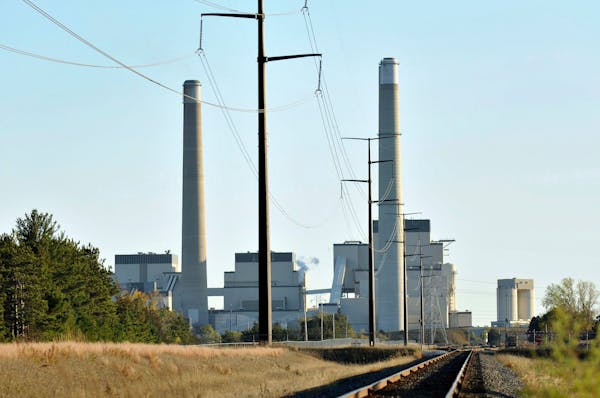Running air conditioning on a hot afternoon — or even starting the dishwasher after dinner — might soon cost Xcel Energy customers quite a bit extra.
Xcel has asked state utility regulators to let it switch Minnesota electric customers to variable rates, which on summer weekdays would be seven times more expensive from 3-8 p.m. than between midnight and 6 a.m., and nearly twice as expensive as all other hours.
If approved, the plan would be a monumental change from the flat rates currently used by the Minneapolis-based power company. The potential shift, first reported by Energy News Network, is meant to ease pressure on the electric grid when demand is highest, help the utility better use wind power generated at night, and give customers more control over their power bill.
Xcel is already transitioning to what are known as time of use rates in Colorado and the company says a test run in the Twin Cities showed promising results. The average customer saved a small amount of money.
Still, one expert who supports the dynamic pricing concept said Xcel's rate design would be an outlier nationally for the significant gap between peak rates and off hours, and he predicted the proposal would invoke a backlash.
"It seems honestly to me to be a blunder waiting to happen," said Ahmad Faruqui, a California-based energy and rate design economist with 40 years of industry experience.
How the rates would work
If the Minnesota Public Utilities Commission (PUC) approves Xcel's plan for its 1.3 million electric customers, the company's highest price for energy use would be from 3-8 p.m. on weekdays.
Xcel would charge its cheapest rates from midnight to 6 a.m. every day. There would be a middle "base" rate for all other hours. That base rate would be more expensive than Xcel's current flat rate from June to September. But it would be cheaper the rest of the year.
Xcel predicts the average residential customer would see a 17.8% jump in electric bills during those four summer months and a 10.6% decrease for the rest of the year. The average bill will be about the same for the course of a year as flat rates, the utility said.
The utility would also have varied rates for electric space heating, which would be the same as the variable electric rates in the summer but much cheaper otherwise.
Xcel would launch the program in mid-to-late 2025 after completing a rollout of new energy meters that is already underway.
Customers would be able to opt out of the variable rates for the current flat rate if they choose.
Variable rates not a new idea
The idea has been in the works for a while. The PUC in 2018 asked Xcel to come up with a plan for a default time of use rate after finishing its pilot. Xcel said reducing peak demand could help keep electricity costs lower, potentially by helping the company avoid building new power plants.
Faruqui said about 10% of households nationally are on time of use rates. The rates are becoming more common because about 80% now have smart meters that better enable the variable pricing. He said time of use rates have upsides, like for people who can shift when they use energy-heavy technology like electric vehicle charging.
Annie Levenson-Falk, executive director of the Citizens Utility Board of Minnesota, a nonprofit that advocates for affordable utility bills, said the variable rates can be more fair because people who use more energy during peak hours impose more costs on the system than others.
A study by an Illinois partner organization found low-income households typically use less electricity during peak hours, she said. But she also said low-income people may be less able to shift energy use to different hours and wondered how variable rates would affect the push to electrify sectors like home heating and cooking.
Questions still unanswered
In its two-year pilot project, Xcel found a modest drop in energy use among Eden Prairie customers during peak summer demand, though among Minneapolis users, the dip was only significant in one year. Xcel said the test rates were close to achieving the goal of incentivizing less energy use during peak times while taking in the same amount of revenue.
Xcel's study showed the average customer had a small decrease in bills while using a bit more energy, though it varied by season and study area. A small group of highly engaged customers, about 10%, delivered more than half the pilot's impacts.
Xcel has proposed somewhat different rates compared with the pilot, and said it would work to engage customers to help more people shift energy use and save cash.
But Faruqui said Xcel's pilot showed "very modest" results and did not justify the company's eventual proposal. He predicted a "huge outcry" and either frustration or surprise from people experiencing things like a jump in air-conditioning prices and suggested an opt-in instead of opt-out program.
"Why take that risk, when the amount of [energy] demand response you get is tiny even if there is no backlash?" he said.
Xcel said the gap between rates is lower once fuel costs are included and recommended people reduce air-conditioning costs through practices like "pre-cooling" their home before temperatures are highest, said spokesman Theo Keith.
